Anemia stands for a lower hemoglobin level in our bodies. Hemoglobin plays a crucial role in our blood. It's a protein particle in red blood cells that carries oxygen from the lungs to tissues. Afterward, it brings back carbon dioxide from those tissues to the lungs. So, hemoglobin deficiencies can affect the body's malfunction and health problems.
Symptoms of anemia can not infrequently be confused with fatigue and stress. Anemia can have various causes. Depending on the results of the diagnosis, multiple types of anemia can be distinguished.
Aplastic anemia is one type of anemia. When the bone marrow fails, it doesn't make enough of certain types of blood cells. This can be due to aplasia or hypoplasia conditions. Thus, erythrocytes, white blood cells, and platelets are in short supply.The method of treating aplastic anemia varies. It all hinges on the root cause and how severe the condition is. The worst cases might call for a certain procedure. They may need To transplant hematopoietic stem cells and undergo treatment to repress the immune system. Disorders proceeding with ineffective hematopoiesis are divided into congenital and acquired. Aplastic anemia is a relatively rare type of anemia.
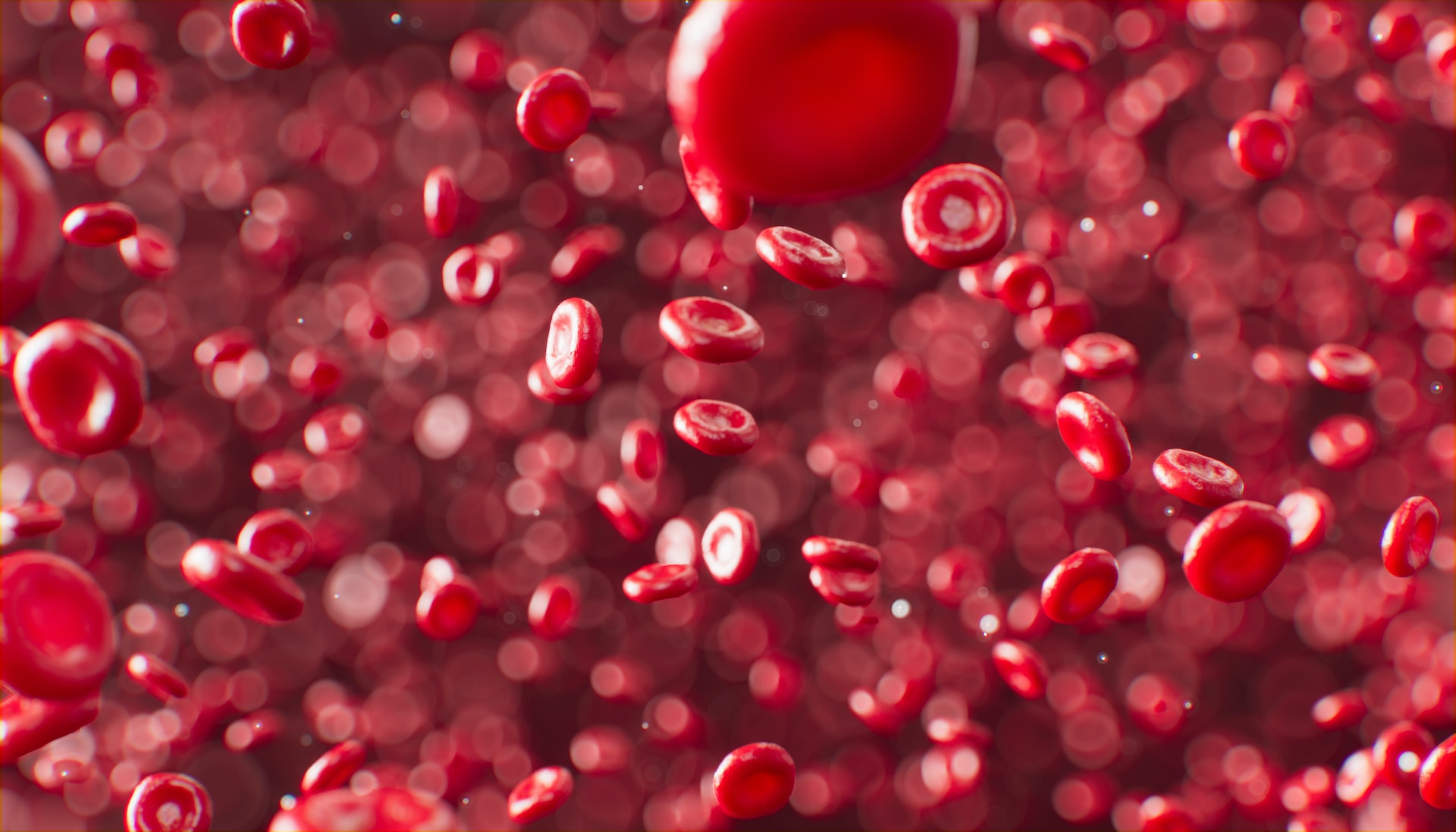
Aplastic anemia can be congenital or acquired. Acquired aplastic anemia is more common and results from various diseases and conditions. Congenital aplastic anemia means that environmental factors did not influence the disease. These two categories of aplastic anemia have multiple causes. Causes of congenital aplastic anemia![]() :
:
Fanconi anemia is congenital anemia, a rare and dangerous genetic disease. It is a disease of the bone marrow![]() , causing leukemia. It deforms bones impairs and disrupts the functioning of the nervous system. The first stages of the disease are sometimes mistaken for different conditions, so too late diagnosis and lack of treatment early in the development of the disease result in a high mortality rate for patients. Fanconi anemia is a rare disease in the course of which acute myeloid leukemia can develop. There is also a risk of various infections.
, causing leukemia. It deforms bones impairs and disrupts the functioning of the nervous system. The first stages of the disease are sometimes mistaken for different conditions, so too late diagnosis and lack of treatment early in the development of the disease result in a high mortality rate for patients. Fanconi anemia is a rare disease in the course of which acute myeloid leukemia can develop. There is also a risk of various infections.
Symptoms – The main symptoms are bone defects arising while the patient is still in the embryonic period, short stature, and a characteristic facial appearance. Often, there is a missing or deformed thumb or an extra finger. In addition, there is skin discoloration in the character of spots and freckles. There are also microcephaly, or unnaturally small skull dimensions, a mandibular deformity, and a nose that is wide at the base. Additional symptoms include disorders of the nervous system, vision, and hearing, mental retardation, defects of the genitourinary system, and heart defects.
Treatment – The disease could not be cured until recently, so symptomatic therapy methods are used. Such strategies include transfusion of red blood cell concentrates or platelet-poor platelets. However, the only way to cure hematological disorders is bone marrow transplantation. In addition, appropriate pharmacotherapy and physiotherapeutic treatment are used.

BDA is one of the more common diseases in the circle of congenital anemias. It is a character of genetically determined aplastic anemia with autosomal dominant inheritance![]() . The disease was first described jointly by American pediatricians Kenneth Daniel Blackfan and Louis Klein Diamond in 1938. Diamond and Blackfan syndrome is a bone marrow disorder in which the production of erythrocytes, is impaired. The disease can also be accompanied by congenital disabilities, particularly abnormalities in the development of the skeletal system. Diagnosis of the disease requires evaluation of the bone marrow, followed by genetic testing.
. The disease was first described jointly by American pediatricians Kenneth Daniel Blackfan and Louis Klein Diamond in 1938. Diamond and Blackfan syndrome is a bone marrow disorder in which the production of erythrocytes, is impaired. The disease can also be accompanied by congenital disabilities, particularly abnormalities in the development of the skeletal system. Diagnosis of the disease requires evaluation of the bone marrow, followed by genetic testing.
Symptoms – Early symptoms typically show up in infancy. BDA children witness issues with their red blood cells in their bone marrow. It leads to anemia that causes tiredness, pale skin, rapid heart beat, difficulty breathing, issues focusing, headaches, and feeling dizzy. Along with this, some kids may be born with physical defects. Mostly these are related to skeleton structure. Deficiencies could include decreased height, abnormal toes, facial irregularities, and problems with neck and ribs.
Treatment – Early symptoms typically show up in infancy. BDA children witness issues with their red blood cells in their bone marrow. It leads to anemia that causes tiredness, pale skin, rapid heart beat, difficulty breathing, issues focusing, headaches, and feeling dizzy. Along with this, some kids may be born with physical defects. Mostly these are related to skeleton structure. Deficiencies could include decreased height, abnormal toes, facial irregularities, and problems with neck and ribs. In severe cases, when the patient is dependent on frequent blood lupus, and there is a risk of iron overload, as well as in cases of resistance to steroid treatment, hematopoietic stem cell transplantation is considered.

Dubowitz syndrome is a genetically determined syndrome![]() of congenital disabilities that involve multiple systems simultaneously. The disease is relatively rare. The causes of this disease have yet to be precisely determined. Two specific genes are responsible for its development. The etiology must be fully understood because Dubowitz syndrome can largely overlap with different clinical entities. Diagnosis is based mainly on observing the clinical picture, which is already done in early childhood. The presence of this syndrome can already be directed by prenatal ultrasound, which identifies fetal developmental delay.
of congenital disabilities that involve multiple systems simultaneously. The disease is relatively rare. The causes of this disease have yet to be precisely determined. Two specific genes are responsible for its development. The etiology must be fully understood because Dubowitz syndrome can largely overlap with different clinical entities. Diagnosis is based mainly on observing the clinical picture, which is already done in early childhood. The presence of this syndrome can already be directed by prenatal ultrasound, which identifies fetal developmental delay.
Symptoms – Symptoms of the disease can already be seen in newborns. It includes low birth weight, microcephaly, and an abnormal mouth shape. Deformities also affect the eyelid crevices, eyebrow arches, and the entire body of the face. In addition, the symptoms characteristic of the syndrome are delayed and stunted growth and development deformities of the face, hands, and feet. At a later age, ocular symptoms join. Intellectual disorders are mild to moderate in severity.
Treatment – Various methods are used based on the individual case. The disease might not be completely curable, but many actions help lessen the symptoms and see that a kid's growth is pretty regular. The chosen treatment matches up with the present symptoms, meaning, it's tuned to the patient's unique needs. Often, Physiotherapy and psychotherapy become crucial. Observation for tumors and hematological disorders is also indicated.
Aplastic anemia is characterized by pancytopenia in the peripheral blood secondary to regenerative hematopoietic failure. The etiology of the disease needs to be sufficiently understood. Autoimmune processes are mostly considered to be the cause of acquired aplastic anemia. Causes of acquired aplastic anemia![]() :
:

Past illnesses – Aplastic anemia can occur as a result of certain diseases. It includes acute hepatitis, not caused by identifiable hepatitis viruses. Anemia can also arise from widespread connective tissue conditions like systemic lupus erythematosus, which is a long-term self-immune disease. Here, the body's immune defenses wrongfully assault its cells and tissues. Varied reasons encompass thymoma, a cancer tied to the thymus gland. This gland is linked with the growth of lymphocytes, and blood illnesses.
Effects of chemicals – Chemicals that can affect the development of aplastic anemia include benzene and different organic solvents, trinitrotoluene, insecticides and herbicides, and alcohol. In the case of poisoning by chemicals, rapid intervention and lavage of the stomach is necessary. Poisoning can also result from the absorption of small doses of chemicals due to chemical agents in the work environment.
Effects of medications – There are certain medicines that can impact how aplastic anemia develops. These include powerful drugs like cytostatics, phenylbutazone, and chloramphenicol, as well as sulfonamides, gold compounds, chloroquine, c************e, phenytoin, a*********l, and thiazides. Often, these are strong medicines. They could be antibiotics or anti-inflammatories, or drugs used in cancer treatment. These medicines can have a toxic impact on cancer cells.
Ionizing radiation – Our bodies meet effects from ionizing radiation. It comes from man-made and natural origins. Medical devices are examples of man-made radiation sources. Ionizing radiation can injure our blood system. Anemia could happen if our red blood cells face such radiation. The exposure to white blood cells might weaken our immune system. Also, it can harm our bone marrow, result in hair shedding, and prompt skin to turn red or break into rashes.
Viral infections – There are certain viral infections that can result in aplastic anemia. They consist of retroviruses, hepatitis types A, B, and C, HIV, Epstein-Barr virus, Herpes viruses, the parvovirus B19, and dengue virus. A strong viral infection could trigger complications. Aplastic anemia is one such problem where the viral infection eventually makes the bone marrow incapable of producing the needed blood cells for the body.
Pregnancy – This cause is infrequent, but it is possible to acquire aplastic anemia as a result of pregnancy. Aplastic anemia is a rare disease with a severe course that can also be diagnosed in a pregnant woman. Managing a patient with aplastic anemia during pregnancy requires specialized cooperation between obstetricians and hematologists. Due to the increased possibility of bleeding and infection during pregnancy, during labor, and postpartum, there is a real risk of loss of life for the mother and fetus.

Aplastic anemia can cause pancytopenia. Pancytopenia![]() is a disorder that we can diagnose based on blood count. It is a condition in which there is a deficiency of all morphotic elements of the blood, namely red blood cells, erythrocytes, leukocytes, and thrombocytes. Neutropenia, leukopenia, and thrombocytopenia can give characteristic symptoms.
is a disorder that we can diagnose based on blood count. It is a condition in which there is a deficiency of all morphotic elements of the blood, namely red blood cells, erythrocytes, leukocytes, and thrombocytes. Neutropenia, leukopenia, and thrombocytopenia can give characteristic symptoms.
The development of the disease can be rapid, involving a few days, or slow, involving several weeks or months. Symptoms depend on the level of reduction in the number of blood cells. They include symptoms of anemia and organ hypoxia. Typical symptoms of aplastic anemia include:

Weakness – Anemia's main signs are a slow bodily weakening and getting tired quicker than before. You may also feel symptoms like sluggishness and a drop in physical and mental shape. Remember, chronic exhaustion is a crucial indicator you should never overlook. Chronic fatigue syndrome can be linked to undiscovered diseases.
Shortness of breath – Reduced blood cells in aplastic anemia can cause shortness of breath, especially after exercise. Rapid loss of strength and general fatigue are characteristic symptoms of all types of anemia. In healthy people, respiratory problems most often occur only after significant strain on the body, while in anemia, shortness of breath can occur after little physical activity or even at rest.
Concentration disorders – Moreover, brain-related conditions like a struggle with focus or attention may be linked to aplastic anemia. Attention deficit disorder is a type of brain issue. It impacts the capability to stay attentive and concentrate. Folks typically find tasks hard to complete, following directions challenging, staying organized problematic, and remembering the leading causes of concentration problems which are being tired, under stress, or not getting enough sleep. Occasionally, issues of not paying attention could be tied to ADHD.
Headache and dizziness – Frequent headaches and dizziness that can even cause fainting are symptoms that can occur in aplastic anemia. Still, don't rely solely on these clues. Headaches and dizziness? They're common in many illnesses, like meningitis, brain abscess, head trauma, central nervous system disorders, and multiple sclerosis. Frequent headaches, dizziness got you down? Time to see the doctor. For an accurate diagnosis, professional help is crucial.
Rapid heartbeat – Tachycardia is called a faster heartbeat than the norm for a certain age. In adults, the heart should beat at a rate of 60-100 times per minute. If the beats are less frequent than 60 per minute, we speak of bradycardia. A quick pulse in aplastic anemia often comes from physical effort. The blood can't bring in more oxygen than your body uses when you work out. Because of this, folks start to breathe in a way that's faster and deeper to add the needed oxygen to their blood.
Pale skin – Many times, folks with anemia mention seeing a lot of whiteness, mainly under their eyes. This usually signals that the body isn't receiving the right amount of oxygen. Skin that's too white just isn't normal. Really white skin can stand out. But keep in mind, some people naturally have light skin, which isn't a sign of illness.
Fever – Symptoms associated with a reduced leukocyte count include fever. Considerable leukocyte deficiencies can be experienced as a sub-fetal state and recurrent respiratory infections. In contrast, a minor leukocyte deficiency usually has no symptoms, so many people are often unaware of leukopenia. Their number can be determined in tests such as blood count.
Cutaneous-mucosal bleeding – A symptom of a reduced platelet count is cutaneous-mucosal bleeding. Issues like bleeding of the gums, nose, urinary tract, and women's reproductive track are common, along with too much bleeding after injuries. The situation might get worse with issues like bleeding inside the skull or gut which could be deadly. The count of blood clotting cells dropping can also cause delayed healing of wounds.
Greater susceptibility to infection – Our blood has different kinds of cells, leukocytes are one. They're super important for our immune system. If someone has leukopenia, they don't have enough white blood cells, making them more likely to get sick. Too much leukopenia is really bad because it seriously messes up our body's defenses. It then increases the risk of various diseases that the body may not be able to fight off, which, in extreme cases, can end in death.
Bruising – Thrombocyte deficiency can also cause easy bruising. A bruise is the colloquial term for a hematoma caused by a subcutaneous hemorrhage. When blood vessels are damaged, a lesion appears on the skin, having a characteristic bluish tint. The color of the bruise over time turns yellowish and sometimes greenish or brownish. In aplastic anemia, a decrease in hemoglobin levels causes clotting disorders. The consequences are bruises appearing on the body for no apparent reason.
Petechiae on the skin – Thrombocytopenia is linked to key signs such as petechiae. These are tiny, spot-like blood leaks under the skin. Petechiae group together visually, resembling a common rash. Unlike rashes, petechiae stay the same and don't fade or alter in hue when you put pressure on them. Petechiae appear in the skin of the extremities, trunk, less commonly the face, and in the mucous membranes of the mouth.

The doctor will first take a history and then examine the patient. The patient will then be referred for additional tests, mostly a morphology![]() of the blood. In the case of aplastic anemia, it will reveal:
of the blood. In the case of aplastic anemia, it will reveal:

Reduced hemoglobin concentration – It is a typical symptom of each type of anemia. Mean Corpuscular Hemoglobin Concentration![]() is an indicator that describes the average hemoglobin concentration in erythrocytes. Reduced hemoglobin concentration in the body may be accompanied by a decrease in the number of erythrocytes or different abnormalities such as too small or too large erythrocyte volume and abnormal hemoglobin concentration in blood cells.
is an indicator that describes the average hemoglobin concentration in erythrocytes. Reduced hemoglobin concentration in the body may be accompanied by a decrease in the number of erythrocytes or different abnormalities such as too small or too large erythrocyte volume and abnormal hemoglobin concentration in blood cells.
Reduction in erythrocytes – Aplastic anemia is a condition when the numbers of red blood cells![]() decrease. These cells, also called erythrocytes, are normally average in size and packed with hemoglobin. Their most critical task? They ferry oxygen and carbon dioxide around the body. Erythrocytes are like oxygen-carrying trucks; their cargo? Hemoglobin, a protein that helps hook and carry oxygen in our blood. If you're short on erythrocytes, or your hemoglobin count drops, you can get anemia. The result? Your body finds it harder to carry oxygen. This lack of oxygen transportation often shows through your feeling weak, feeling tired, and suffering other oxygen-shortage symptoms.
decrease. These cells, also called erythrocytes, are normally average in size and packed with hemoglobin. Their most critical task? They ferry oxygen and carbon dioxide around the body. Erythrocytes are like oxygen-carrying trucks; their cargo? Hemoglobin, a protein that helps hook and carry oxygen in our blood. If you're short on erythrocytes, or your hemoglobin count drops, you can get anemia. The result? Your body finds it harder to carry oxygen. This lack of oxygen transportation often shows through your feeling weak, feeling tired, and suffering other oxygen-shortage symptoms.
Reduction in the number of reticulocytes – In aplastic anemia, a reduction in the number of reticulocytes![]() is also noted. Reticulocytes are the nucleus-free, immature character of erythrocytes. Their maturation into their mature character takes several days and occurs in the bone marrow. Then, they are released into the peripheral blood. Reticulocytes are bigger but have less hemoglobin than erythrocytes. Checking the reticulocyte count in someone's blood can show how well their bone marrow is making erythrocytes.
is also noted. Reticulocytes are the nucleus-free, immature character of erythrocytes. Their maturation into their mature character takes several days and occurs in the bone marrow. Then, they are released into the peripheral blood. Reticulocytes are bigger but have less hemoglobin than erythrocytes. Checking the reticulocyte count in someone's blood can show how well their bone marrow is making erythrocytes.
Reduced leukocyte count – Aplastic anemia often leads to fewer leukocytes![]() . These cells are crucial for your health. Granulocytes, lymphocytes, and monocytes are the main types. They're in your spleen and lymph nodes too. Megakaryocytes, tiny pieces of white blood cells, help blood clot. You can find these in your bone marrow. The number of leukocytes depends on age – children have more than adults. Leukocytes also belong to the immune system and are responsible for finding and fighting pathogenic bacteria and microorganisms.
. These cells are crucial for your health. Granulocytes, lymphocytes, and monocytes are the main types. They're in your spleen and lymph nodes too. Megakaryocytes, tiny pieces of white blood cells, help blood clot. You can find these in your bone marrow. The number of leukocytes depends on age – children have more than adults. Leukocytes also belong to the immune system and are responsible for finding and fighting pathogenic bacteria and microorganisms.
Reduced number of neutrophils – Neutrophils![]() belong to the leukocyte population, which is the most numerous group of leukocytes, providing cellular immunity. Neutrophils are vital parts of our body's defense system. They spot and wipe out harmful germs. They're super important in keeping us safe from harmful tiny organisms. So, when their count changes or they stop working right, we can get sick.
belong to the leukocyte population, which is the most numerous group of leukocytes, providing cellular immunity. Neutrophils are vital parts of our body's defense system. They spot and wipe out harmful germs. They're super important in keeping us safe from harmful tiny organisms. So, when their count changes or they stop working right, we can get sick.
Reduced number of thrombocytes – Platelets![]() are essential in blood clotting processes. Thrombocytes are also involved in secondary or plasma hemostasis processes. Because of their crucial role in blood clotting processes, Platelets are necessary for maintaining the body's homeostasis. When the number of thrombocytes is below average, we speak of thrombocytopenia, or thrombocytopenia, which is noted in studies in people with aplastic anemia. Morphological examination also allows us to assess their size.
are essential in blood clotting processes. Thrombocytes are also involved in secondary or plasma hemostasis processes. Because of their crucial role in blood clotting processes, Platelets are necessary for maintaining the body's homeostasis. When the number of thrombocytes is below average, we speak of thrombocytopenia, or thrombocytopenia, which is noted in studies in people with aplastic anemia. Morphological examination also allows us to assess their size.

In suspected aplastic anemia, different additional testing methods are also possible. They are used primarily in unusual cases or the occurrence of complications. They are also suitable for better diagnosis of the disease factor. It is essential for examinations such as X-ray or CT of the chest and abdominal ultrasound. In addition to it, the following are also distinguished:
Bone marrow morphology test – Another test done in suspected aplastic anemia is the bone marrow morphology test, taken during a bone marrow aspiration biopsy or trephinebiopsy![]() . A bone marrow biopsy is one of the most important tests used in hematology diagnosis. It involves the collection of bone marrow, which is then subjected to cytological, immunohistochemical, and molecular tests, among others.
. A bone marrow biopsy is one of the most important tests used in hematology diagnosis. It involves the collection of bone marrow, which is then subjected to cytological, immunohistochemical, and molecular tests, among others.
Cytogenetic and molecular testing – Molecular cytogenetics is one variation of cytogenetics or genetic testing. It is used mainly in oncology, and its goal is to detect abnormal mutations and congenital disabilities that may contribute to developing diseases in the future. When genes cause aplastic anemia, these tests can help diagnose the condition. Various samples containing genetic material are taken depending on the goal for which a particular molecular test is being done.
Vitamin B12, folic acid levels – Vitamin B12 plays a crucial role in creating and growing red blood cells, plus building DNA, the code in our cells. Vit B12 also ensures our nerves work like they should. This is why vitamin B12![]() deficiency can result in anemia. On the morphology, folic acid
deficiency can result in anemia. On the morphology, folic acid![]() deficiency anemia may be indicated by decreased hemoglobin, increased mean erythrocyte volume, and moderate thrombocytopenia. In different studies, decreased plasma and erythrocyte concentrations of folic acid may be an indicator.
deficiency anemia may be indicated by decreased hemoglobin, increased mean erythrocyte volume, and moderate thrombocytopenia. In different studies, decreased plasma and erythrocyte concentrations of folic acid may be an indicator.
Virological tests – Testing for viruses![]() involves two steps. First, we gather a sample and find the virus. Second, we look for signs of it in the host. These signs can be its antigens, its genetic material, or the host's antibodies against it. We do these tests when trying to find the cause of aplastic anemia. One possible cause? Viral infections.
involves two steps. First, we gather a sample and find the virus. Second, we look for signs of it in the host. These signs can be its antigens, its genetic material, or the host's antibodies against it. We do these tests when trying to find the cause of aplastic anemia. One possible cause? Viral infections.
Assessing liver function – Several laboratory tests can check the liver condition. These include liver tests. A biochemical blood test to evaluate liver function and the activity of the enzymes it produces. Based on this, the movement of liver condition parameters is determined in the blood serum. These tests are essential because developing hepatitis can cause aplastic anemia.

Treatment depends on the level of severity of bone marrow changes. Three levels of severity of aplastic anemia are distinguished. In therapy, it is essential to remove the potential cause. Patients with moderate aplastic anemia usually do not require treatment. The disease can progress rapidly, but the course is stable for many years in many patients, and there may even be spontaneous improvement.
Moderate aplastic anemia is usually not life-threatening. Severe and very severe characteristics of aplastic anemia require immediate specialized hematological treatment. The following therapies are distinguished:
Allogeneic bone marrow transplantation – In aplastic anemia, a bone marrow transplant![]() may be necessary. It is the treatment of choice for patients under 50 with severe or very severe characteristics of aplastic anemia. Hematopoietic cell transplantation is a set of medical procedures involving the transfusion of allogeneic or autologous hematopoietic cells for therapeutic goals. Allogeneic transplantation is a type in which the donor is related to the patient or unrelated.
may be necessary. It is the treatment of choice for patients under 50 with severe or very severe characteristics of aplastic anemia. Hematopoietic cell transplantation is a set of medical procedures involving the transfusion of allogeneic or autologous hematopoietic cells for therapeutic goals. Allogeneic transplantation is a type in which the donor is related to the patient or unrelated.
Immunosuppressive treatment – During therapy, we use medicines like glucocorticosteroids. We don't fully understand how these drugs work, but we know they help make more red blood cells in your bone marrow. You take the steroids by mouth every day. Doses of the drug are modified to keep hemoglobin values within appropriate limits with the least possible exposure to side effects. Patients treated chronically with glucocorticosteroids should remain under the constant supervision of a hematologist or doctor.
Transfusion of blood products – Transfusion of blood components![]() involves their intravenous administration in many clinical situations, the typical exponent of which is the lack of these components in adequate amounts in the vascular bed. Blood transfusion is a procedure most often done during surgery, in hematology or emergency departments, but it is also used in cases of acquired anemia.
involves their intravenous administration in many clinical situations, the typical exponent of which is the lack of these components in adequate amounts in the vascular bed. Blood transfusion is a procedure most often done during surgery, in hematology or emergency departments, but it is also used in cases of acquired anemia.
Bone marrow stimulating drugs – Medicines that boost the bone marrow's function to create neutrophils are commonly employed. These are useful in battling stubborn infections that don't respond to antibiotics or antifungal treatments. This is because they momentarily up the count of neutrophils. In these drugs, you'll often find f********m. This substance triggers the marrow to generate more white blood cells.
Treatment of bacterial and fungal infections – This treatment method is only necessary in some cases. Many severe cases of aplastic anemia are caused by infection. Treatment of bacterial infections is based mainly on antibiotics, which act on Gram-negative bacteria. Treatment of superficial mycosis usually involves topical therapy in the form of such characteristics as creams, ointments, salves, or sprays. In more severe cases, general medicine supports topical treatment in the form of oral preparations, for example. Medications depend on the type of infection.

Non-severe aplastic anemia is usually not life-threatening. The disease can progress rapidly, but the course is stable for many years in many patients, and there may even be spontaneous improvement. Severe aplastic anemia requires causal treatment, as the prognosis is unfavorable if this is not undertaken. Aplastic anemia is curable when it is treated with bone marrow transplants.
Severe cases of aplastic anemia are dangerous and require specialized treatment. As a result of untreated aplastic anemia, the disease can progress to myelodysplastic syndrome![]() , acute leukemia, or paroxysmal nocturnal hemoglobinuria
, acute leukemia, or paroxysmal nocturnal hemoglobinuria![]() .
.
Myelodysplastic syndrome – The syndrome are a group of diverse diseases whose most characteristic feature is a decreased number of blood cells in the peripheral blood, resulting from their abnormal formation in the bone marrow. Early detection offers a chance to manage the disease better and prevent it from developing into acute myeloid leukemia. Myelodysplastic syndrome patients develop irreversible damage to stem cells. The newly formed blood cells differ in appearance and function. In the case of both blood cancers and myelodysplastic syndrome, the treatment method is selected individually for the patient's condition.
Leukemia – Acute leukemia is a rare malignant tumor arising in the bone marrow and present in the peripheral blood, originating from the youngest cells of the hematopoietic system. This illness strikes fast, often within weeks or just days. It also moves swiftly and fiercely. This is why patients need quick detection and instant care. Acute myeloid leukemia is a very dangerous and harsh blood cancer. If it's not recognized and treated timely, it may cause death in 2-3 months.
Paroxysmal nocturnal hemoglobinuria – It is a type of rare hemolytic anemia that is clinically manifested by intravascular hemolysis, various levels of bone marrow failure, and a tendency to venous and arterial thrombosis. Paroxysmal nocturnal hemoglobinuria is included in the conditions during which erythrocyte breakdown is observed. It is an acquired disorder caused by a disorder of the hematopoietic stem cell. At the same time, an overactive clotting system develops, which can cause thrombosis and bone marrow failure.
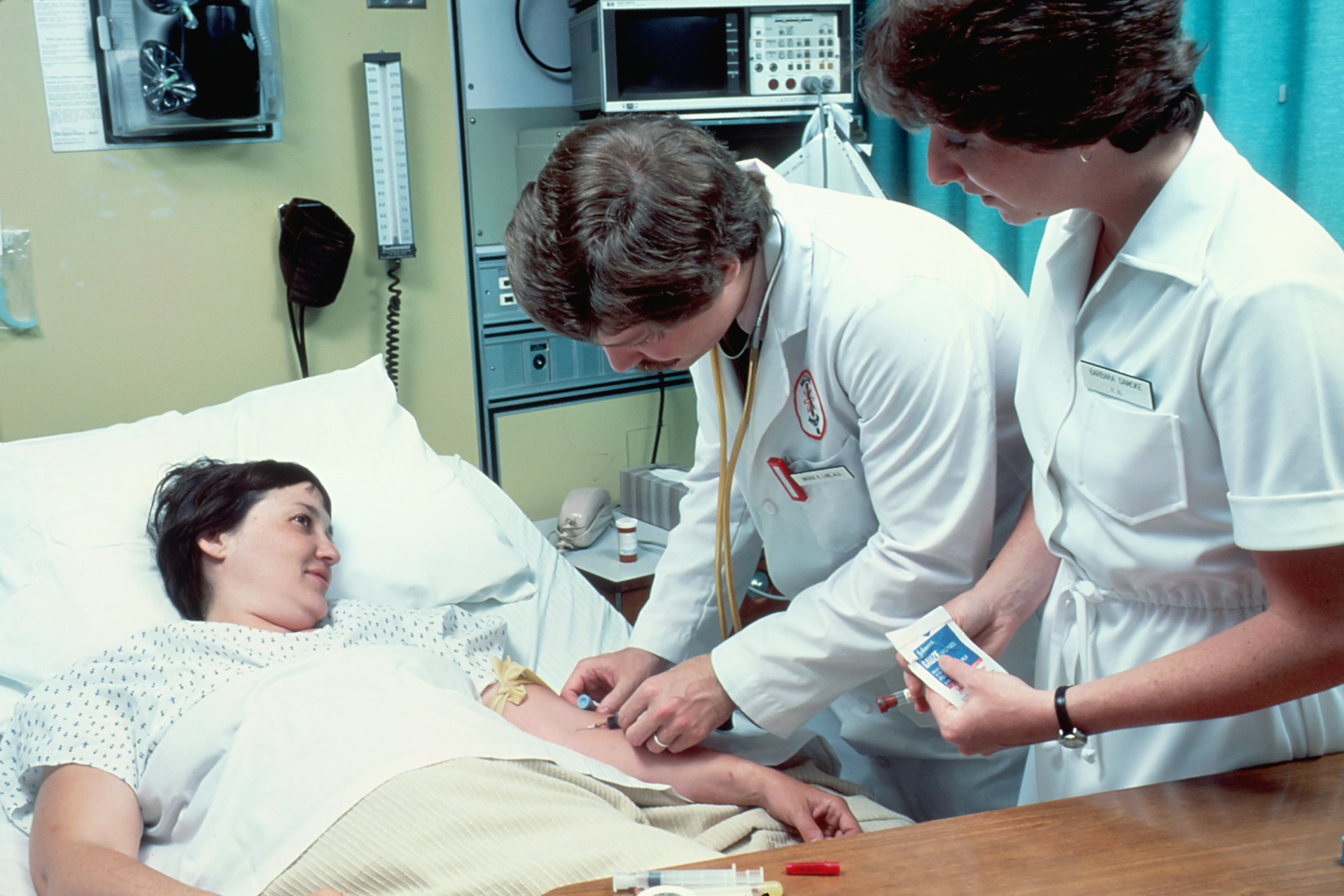
Although there are many causes of anemia, most have similar symptoms. Feeling weak, heart racing, headaches; these are signs of anemia. How bad these symptoms are depends on how severe the anemia is and how quickly it worsens. Each type of anemia means you have less hemoglobin in your body. A reduced number of erythrocytes, red blood cells, and hematocrit often accompanies it. Depending on the results of the diagnosis, various types of anemia should be distinguished:
Iron deficiency anemia – This condition in which, due to too little iron in the body, heme synthesis has been impaired, and red blood cells that are smaller than usual and contain less hemoglobin are formed. It is one of the most common anemias. Causes include an improper iron-deficient diet, impaired absorption, or sudden blood loss. In women, it is most often associated with abnormal monthly bleeding. Fundamentals of iron deficiency anemia management is using iron preparations, most often administered orally.
Sickle cell anemia – This condition is an incurable congenital life-threatening disease. An abnormal structure of hemoglobin characterizes it. Erythrocytes have a sickle-like shape, hence the name of this type of anemia. Sickle cell anemia manifests as recurrent severe pain in the hands and enlargement of the liver and spleen. The first symptoms appear as early as the third month of life. The anemia is caused by a gene mutation that codes for hemoglobin. Treatment is based on the prevention of acute symptoms of the disease. Sickle cell anemia can only be cured by transplantation of hematopoietic cells.
Sickle cell anemia – Sickle cell anemia, or Addison-Biermer disease, is a hematological disorder belonging to the group of megaloblastic anemias, in which the volume of the red blood cell is increased. Lacking enough vitamin B12 causes trouble. It's not properly taken in by your gut. You could face nerve issues or your gut might not work right. Your red blood cells might not be made right. This messes up how oxygen gets around in your blood. Because of this, people often think it's just stress. Pernicious anemia, though, is caused by your body attacking itself.
Hemolytic anemia – Anemia of this kind is about abnormal red blood cell destruction, known as hemolysis, happening at different places in the body. It might be inherited or developed and can spring from many causes. The signs are identical to those of other anemias. In addition, there may be jaundiced, dark-colored urine. Treatment depends on the grounds of hemolytic anemia. Hemolytic anemia is a relatively rare disease. More common are anemias caused by iron deficiencies, vitamin B12 or folic acid, and anemia of chronic diseases. Congenital characteristics of hemolytic anemia usually reveal themselves younger and acquire characters in middle age and older.
Aplastic anemia is bone marrow failure resulting from bone marrow hypoplasia or aplasia. Blood cells are not make properly in the bone marrow, causing pancytopenia and decreased erythrocytes, leukocytes, and thrombocytes. Aplastic anemia is differentiated into congenital or acquired. Aplastic anemia, traced to various diseases and conditions, is rather prevalent. One common inherited type is Fanconi anemia, often noted early in a child's growth.
As the number of blood cells decrease, symptoms emerge. Anemia symptoms and organ hypoxia are seen. Also, there might be mental disorders, a fever, and bleeding instances. At times, situations worsen to gastrointestinal bleeding and cerebral hemorrhage, which can lead to death. Diagnosis requires a blood count. Treatment hinges on the cause and severity of aplastic anemia. The magnitude of bone marrow damage also determines treatment. Non-severe aplastic anemia is usually not deadly, although severe cases can trigger complications.
Table of Contents
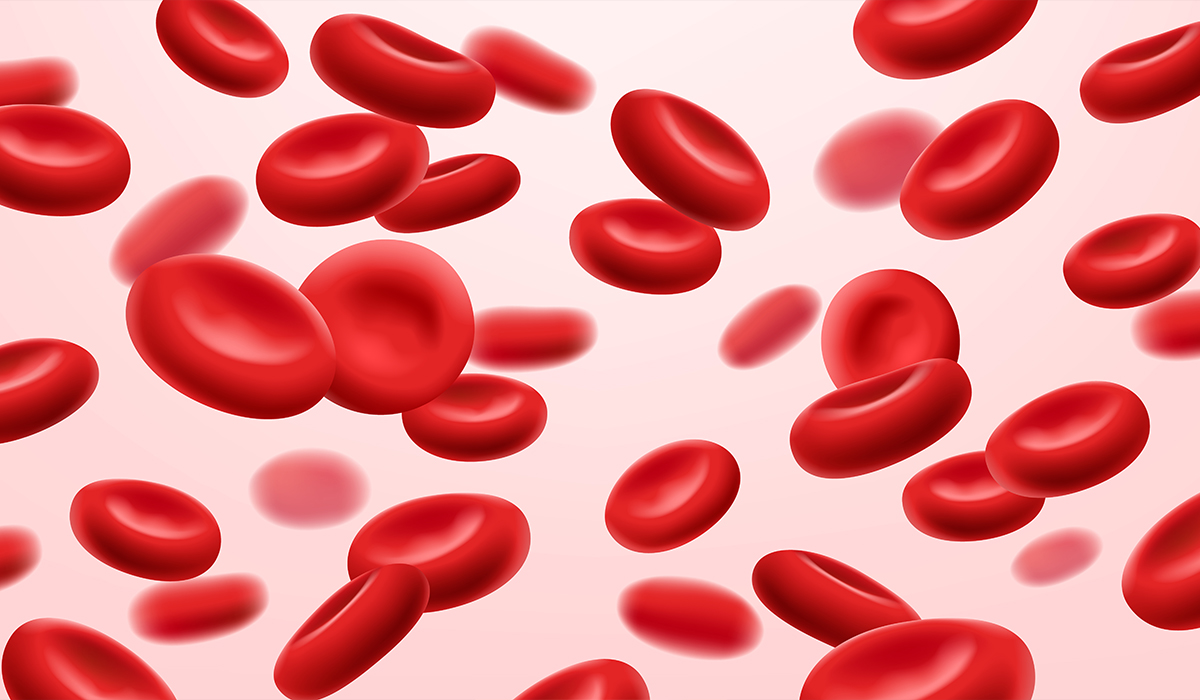
Hemoglobin is an important part of the blood. Its deficiency as well as excess negatively affects health. Learn about the… read more »

Anemia is when the body does not have enough red blood cells (erythrocytes) to deliver enough oxygen to the tissues.… read more »
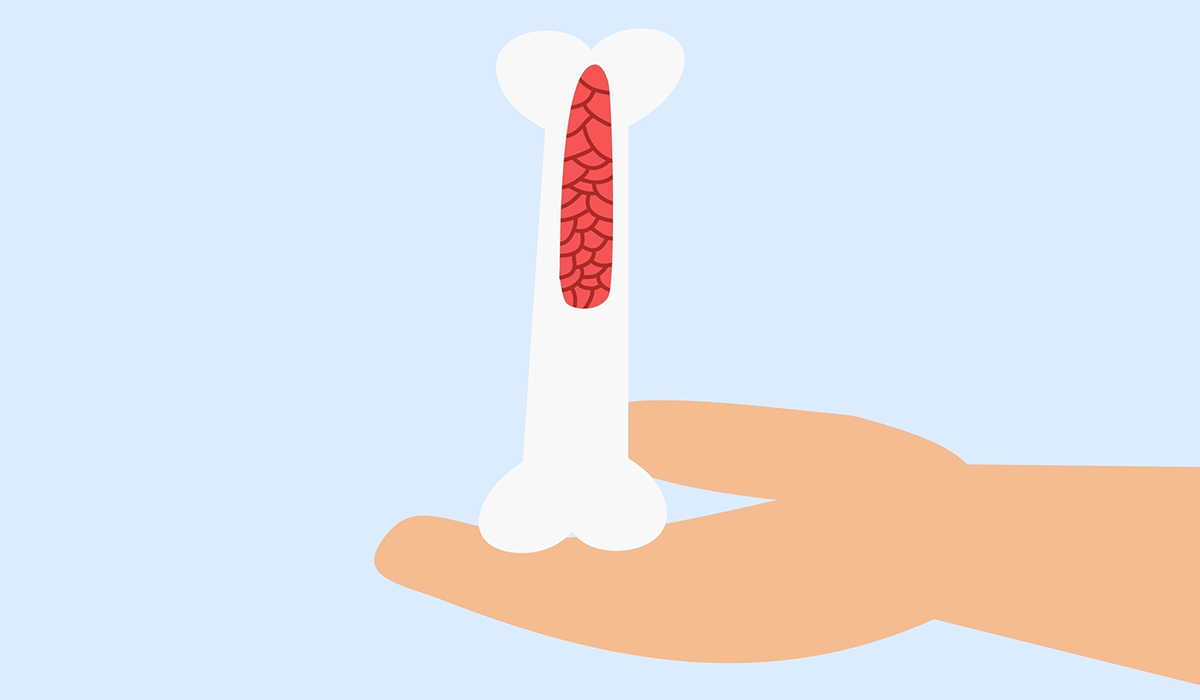
The bone marrow is an important part of the human body. Learn to recognise diseases that can occur when the… read more »
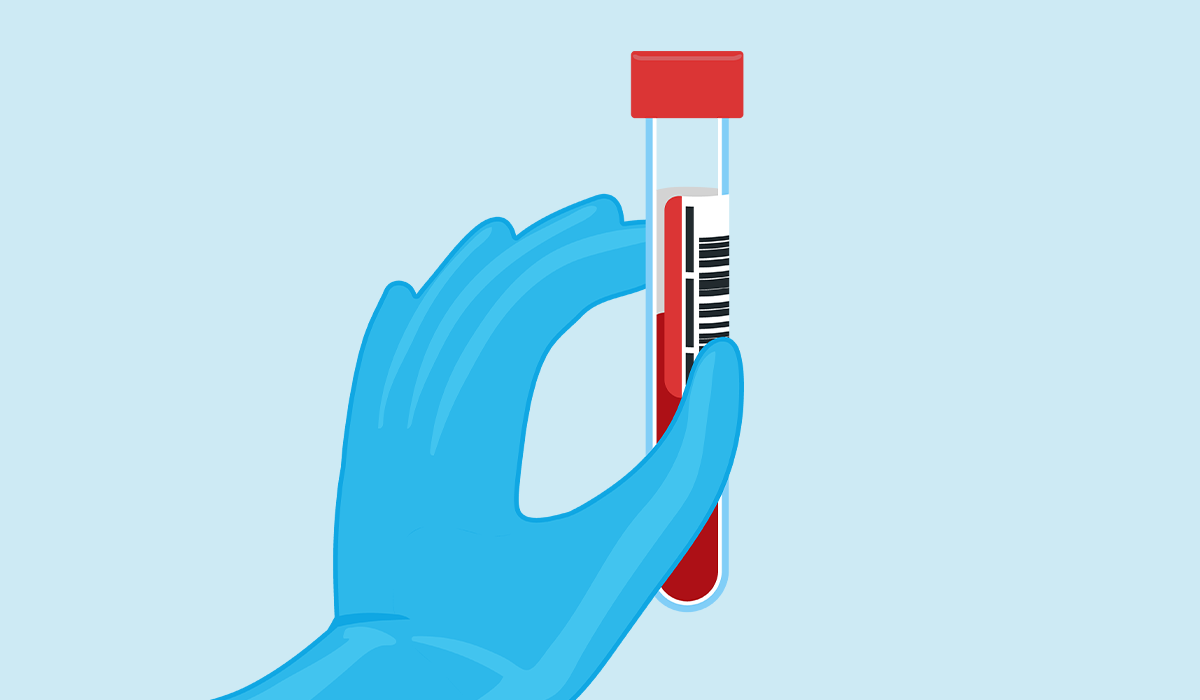
Morphology is a examination of the shape, size, and appearance of blood cells. When should you do it? read more »
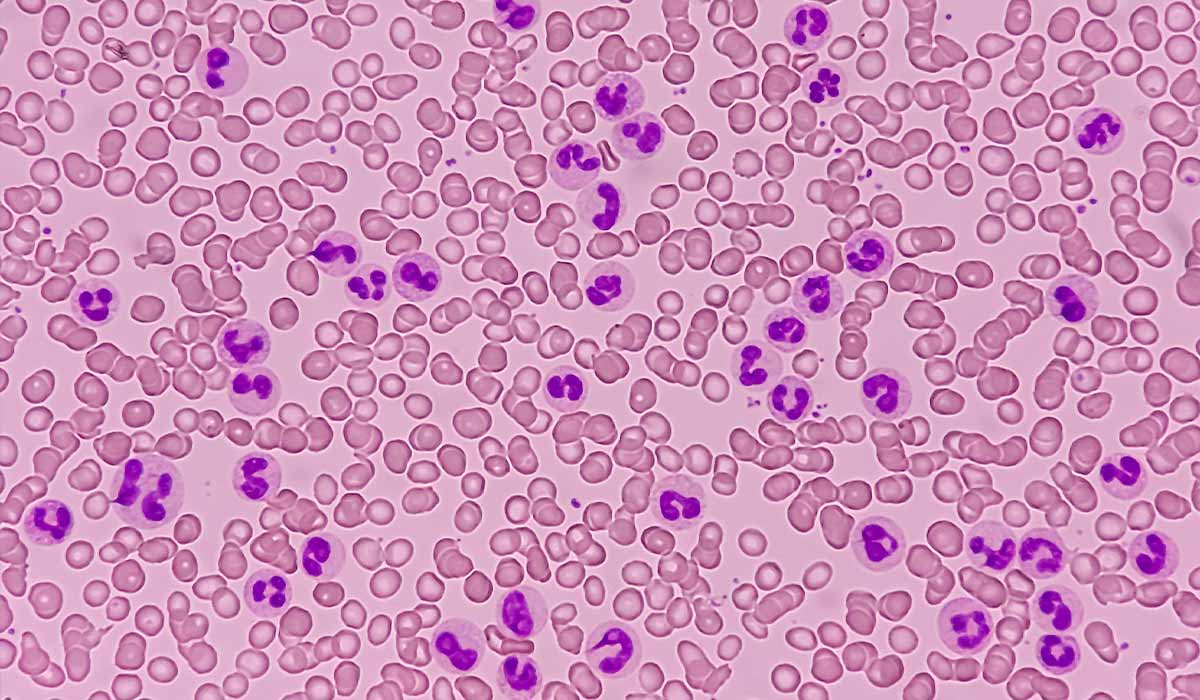
Neutrophils are a type of white cell and one of the most essential components of the human immune system. The… read more »

Multiple myeloma is a type of bone marrow and blood cancer. Its main symptoms are bone pain, kidney problems, anemia,… read more »

White Blood cells have exceptionally vital employment in a safe framework. They move through blood and lymph frameworks, attempting to… read more »
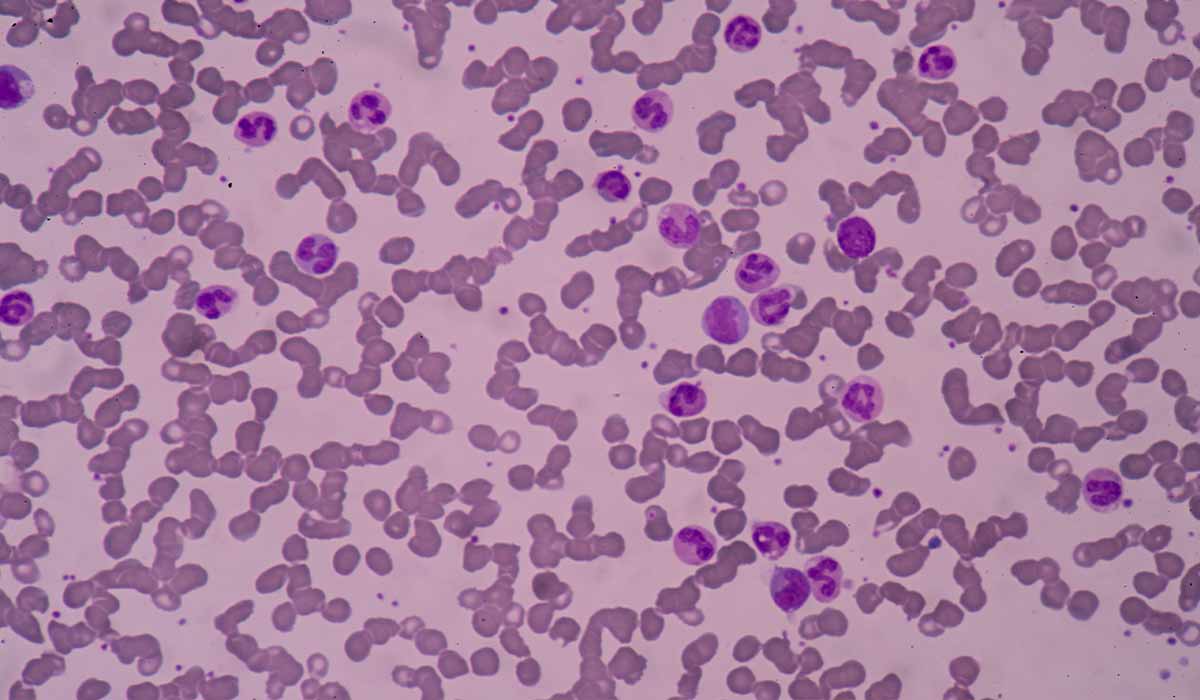
Leukocytosis is a condition in which the upper norm for white blood cells is exceeded. What are its symptoms and… read more »
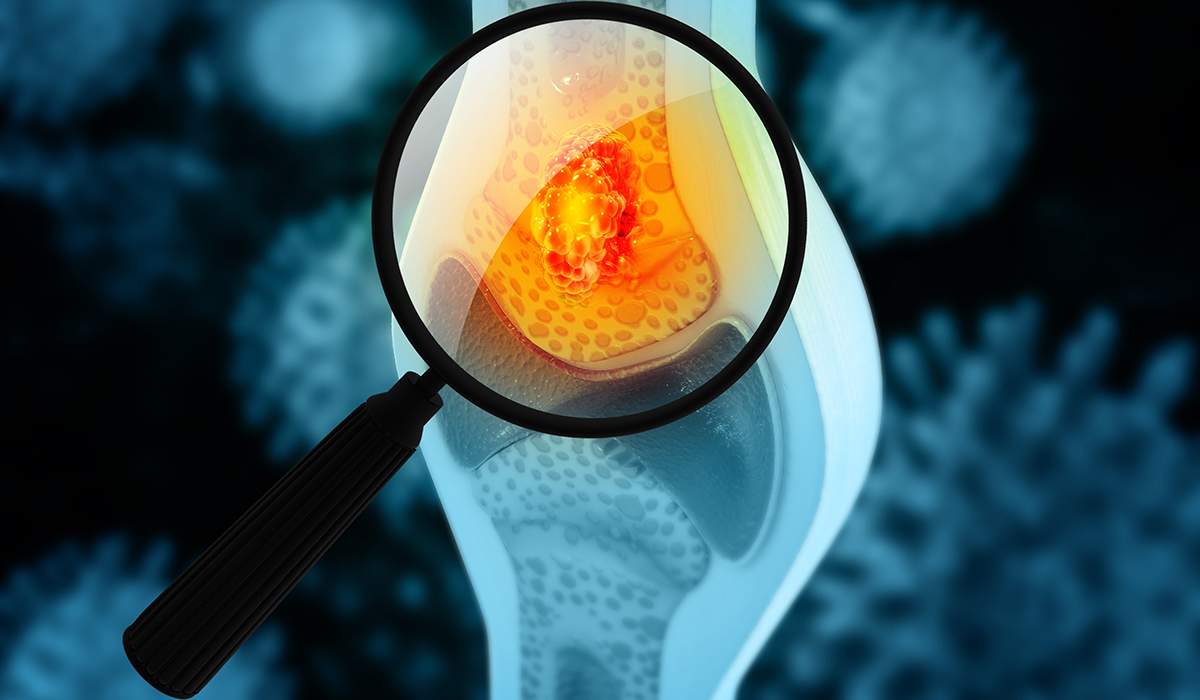
Bone cancer is a disease in which cancerous lesions develop in bone tissue. It can be primary or a result… read more »